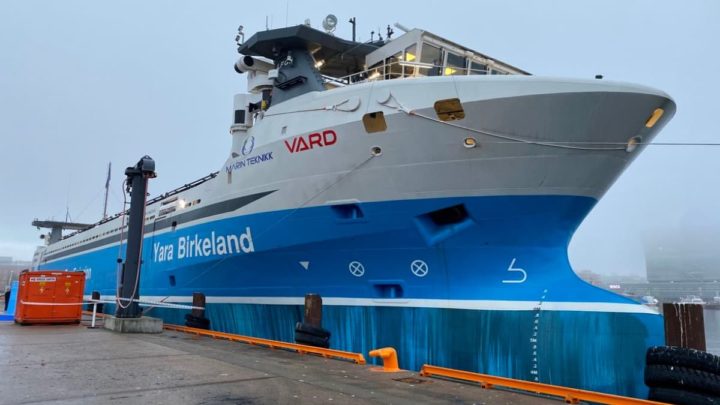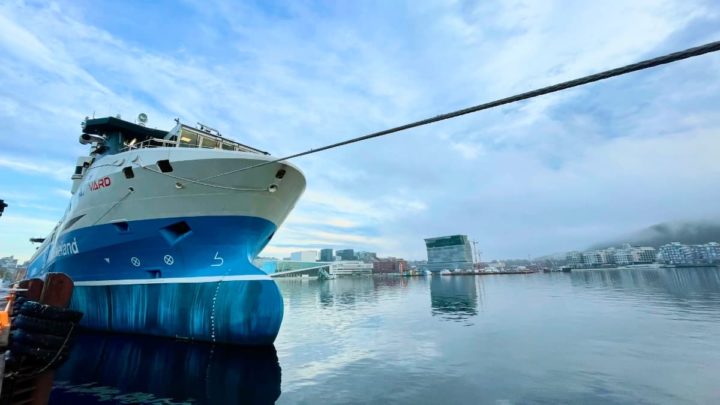Although the focus is on the car, the truth is that there are many other scenarios in which autonomous electric vehicles may be more necessary and effective. Examples include shipping companies that have been taking predetermined routes for years, have roughly the same methods for all flights, and can transfer many of these competencies to autonomous navigation technology. The evidence is there and the world’s leading autonomous electric cargo ship has just completed its maiden voyage.
This technological advancement will save 1,000 tons of carbon emissions annually.
The ship still has a bridge, but only to observe the behavior
It's called the Yara Birkeland and it's the world's first all-electric, zero-emissions container ship. The ship completed its maiden voyage in Norway. Birkeland has traveled 14 kilometers from Bursgrunn to Port Brevik, according to a press release Sent by its manufacturers, Yura.
Although it seems like a short trip, as a major fertilizer producer, Yara makes about 40,000 truck trips annually to transport its products to Brevik port for export. The container ship will replace truck cruises starting next year.
Thus, this change in transportation strategy is expected to reduce 1,000 tons of carbon emissions annually.
Work on the 80m electric container ship started in early 2017, as we know. It is designed to transport 103 containers in one flight.
The Birkeland is powered by a 7 megawatt-hour battery and can travel at a top speed of 15 knots. Financial support for the construction of the first cargo ship of this type came from Enova, a Norwegian state company that promotes the use of renewable energy.
Enova donated 133 million Norwegian kroner (about 13.25 million euros) to build Birkeland, which is able to travel solo.
Traveling across the sea without ordering humans is a reality
The ship has a wide range of autonomous navigation technologies. It features sensors that can detect things like a water kayak, icebergs, and other obstacles. All of these integrations are provided to standalone operations by Kongsberg.
In the future, the company said, the ship will be able to load and unload its cargo, charge its battery and move without any human intervention. From next year, the container ship will make two voyages per week with manual crew. Autonomous navigation technology will be tested for two years, after which the ship will be certified as autonomous and the bridge will be removed from the ship.
In addition to eliminating transportation emissions, Yara, one of Norway's largest sources of carbon emissions, also plans to produce green ammonia. As a fertilizer producer, Yara needs significant amounts of ammonia, the production of which contributes just over 1% of global greenhouse gas emissions, according to Yara's press release.
The fertilizer company also wants to use this green ammonia as fuel for ships.




